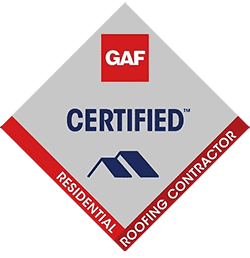How to Prepare Your Home for a Roof Replacement!
Roof replacement is a significant home improvement project that can protect your home for decades.
Proper preparation for a new roof installation ensures a smooth and efficient process.
This guide will discuss key steps to prepare your home for a roof replacement, helping you avoid common pitfalls and ensure your project runs seamlessly.
Understanding the Roof Replacement Process
Before diving into preparation, it's important to understand the typical roof replacement process.
A roof replacement usually involves:
Recognizing these stages helps you anticipate and plan against any disruptions.
Initial Home Preparation
Before the roof replacement begins, it's important to prepare the exterior of your home to create a safe and efficient work environment.
Taking a few steps to clear space and protect your property will help ensure the project goes smoothly and minimize disruptions.
Start by addressing the following:
Indoor Preparations
Roof work doesn't just impact the exterior of your home—it can also create some disturbances inside.
The noise, vibrations, and dust generated during the roof replacement can potentially cause damage to your interior.
Taking a few precautions inside your home will help protect your belongings and ensure a smoother process.
Communicating with Your Roofing Contractor
Clear and open communication with your roofing contractor is essential for a successful roof replacement project.
Ensuring both parties understand the scope of the work, the timeline, and any special considerations will help avoid misunderstandings and ensure that the job goes as planned.
Safety Measures
Roof replacement can be dangerous, so safety should always be a top priority for everyone involved.
Protecting your family and coordinating with neighbors will help ensure a smooth, accident-free process.
Handling Weather Concerns
Weather is one of the most unpredictable factors regarding roof replacement.
Rain, high winds, or extreme temperatures can cause delays or impact the quality of the work.
Here's how you can prepare for weather-related issues:
Post-Replacement Checklist
Once the roof replacement is complete, it's important to thoroughly inspect the work to ensure everything has been done correctly and to your satisfaction.
This final checklist will help you confirm that the project meets your expectations.
Conclusion
Preparing for a new roof installation is essential for ensuring the project runs smoothly and that your home is protected throughout the process.
Clear communication with your roofing contractor about the timeline, costs, and any special requirements will set expectations and help avoid misunderstandings.
Additionally, prioritizing safety for your family, handling weather concerns, and performing a thorough post-installation inspection will ensure that your new roof is installed correctly and meets your expectations.
With careful planning and attention to detail, you can make the roof replacement process as stress-free as possible and enjoy a durable, high-quality roof for years to come.
Key Takeaways
FAQs
1. How long does a roof replacement take?
2. What should I do with my pets during a roof replacement?
3. Can children remain home during the roofing replacement?
4. How should I protect my garden during roof replacement?
5. What if the weather changes unexpectedly during the project?
6. How much does a roof replacement typically cost?
7. Is it necessary to move out during the roof replacement?
8. How can I verify that a roof replacement is done correctly?
9. Are there financing options for roof replacement?
10. How often should a roof be replaced?
- Removing Old Roofing Materials: Stripping away shingles, tiles, or other roofing materials.
- Repairing the Roof Deck: Fixing any damaged parts of the roof's underlying structure.
- Installing New Roofing Materials: Laying down new shingles or tiles.
- Final Inspection and Cleanup: Ensuring everything is installed correctly and removing debris.
- Clear the Driveway: Roof replacement projects often require contractor vehicles and large equipment to be parked near your home. By clearing your driveway and providing enough space, you'll ensure that the crew has room to park their trucks and set up their tools. This also reduces the risk of accidents or equipment being blocked by parked cars.
- Secure Outdoor Items: Falling debris, such as shingles, nails, and tools, can be a hazard during the roof replacement process. To prevent any damage to your outdoor belongings, secure patio furniture, grills, potted plants, and anything else that could be affected. The best option is to move these items into your garage or another safe area.
- Remove Satellites and Antennas: If your home has satellite dishes, antennas, or any other objects attached to the roof, these should be temporarily removed before the roofing work begins. This ensures they won't be damaged during the project and gives the roofing team unobstructed access to your roof for repairs or replacement.
- Secure Valuables: The vibrations from roof work can cause items to shift or fall. For this reason, it's important to secure any fragile or valuable items on shelves, countertops, or hanging on walls. Moving breakable items to a safe, secure area can prevent damage.
- Cover Furniture and Attics: The roof replacement process generates a lot of dust and debris that can easily travel through open windows, doors, or vents. Cover your furniture, electronics, and other belongings with sheets, plastic tarps, or drop cloths to protect your furniture, electronics, and other belongings. If you have an attic, consider covering attic items as well to keep dust from accumulating on stored goods.
- Discuss the Timeline: Ask your contractor to provide a detailed project schedule, including the start and completion dates and any expected interruptions. This will help you prepare for potential disruptions, such as noise or the need to temporarily stay away from certain areas of your home. Knowing the timeline also allows you to plan around potential delays, especially if weather conditions become a factor.
- Clarify Expectations and Costs: Review the scope and associated costs with your contractor before the roofing project begins. This should include not just the total cost of the project but also any additional charges that may arise. Clarifying these details in advance can help prevent misunderstandings regarding payment and expectations.
- Prepare Questions: Before the work starts, it's essential to ask your contractor about any concerns you may have. Whether it's about the types of materials being used, potential disruptions, or the process for handling unexpected issues, getting your questions answered early can give you peace of mind throughout the project.
- Ensure Safety for Family: Keeping children and pets away from the work site during roof replacement is essential. Falling debris, tools, or the roofing crew working on ladders can present hazards. Establishing a safety perimeter around the work area and making sure your family members know to stay clear can prevent accidents.
- Coordinate with Neighbors: Roof replacement often involves loud noises, equipment, and workers coming and going. Notifying your neighbors in advance is a good idea, especially if you live in a close-knit neighborhood or have shared spaces. Giving them a heads-up will help them prepare for the noise and any temporary disruptions.
- Check Forecasts: Check weather forecasts before scheduling your roof replacement to ensure favorable conditions. Roof work should ideally be done in dry, mild conditions to ensure materials are applied correctly, and workers can complete the job safely. Scheduling around good weather can minimize the chance of delays or issues.
- Create Contingencies: Discuss potential weather delays with your contractor and establish contingency plans. For example, if rain is expected during the project, find out what steps the contractor will take to protect your home from water damage. Preparing for weather interruptions can prevent setbacks and ensure your roof replacement goes smoothly despite weather challenges.
- Inspect the Work: Walk through the job site with your roofing contractor to inspect the completed work. Look for signs of poor workmanship, such as improperly aligned shingles, gaps in flashing, or other visible issues. Confirm that all roofing job aspects have been completed per your agreement.
- Clean Up: After the work is finished, confirm that all debris, nails, and leftover materials have been removed from your property. Roofing work can leave a lot of mess behind, and it's essential to make sure your driveway, yard, and landscaping are unaffected by the project.
- Evaluate Satisfaction: Finally, take time to evaluate your satisfaction with the work. If there are any concerns or issues, address them with your contractor immediately. Ensuring the project meets your expectations will help you maintain the longevity of your new roof and prevent future problems.
- Following these preparation tips ensures a smoother roof replacement process that protects your home and minimizes disruptions. Proper planning, clear communication, and attention to safety will help ensure a successful project from start to finish.
- Understand the phases of a roof replacement for better planning.
- Prepare both the exterior and interior to safeguard possessions and home areas.
- Maintain open communication with your contractor to align on project specifics.
- Account for safety to protect everyone involved.
- Be proactive about the weather and execute a post-work inspection.
- The timeline varies from a few days to a week, depending on the roof's size and weather conditions.
- Ideally, pets should be kept indoors and in a quieter area away from the work zone to reduce stress and ensure safety.
- Children can remain at home but should be kept away from the work area due to safety concerns.
- Cover sensitive plants and stay vigilant about debris cleanup to protect your garden.
- Most contractors have contingency plans, such as temporary coverings, to protect the job site.
- Costs vary based on location, materials, and roof size. It's essential to discuss specific costs with your contractor.
- It's typically unnecessary, but you should prepare for noise and limited access to certain parts of the home.
- Use a checklist to inspect key areas after completion and request an inspection report from your contractor.
- Many roofing companies offer financing options. Inquire with your contractor about available plans.
- Roofs should typically be replaced every 20-30 years, depending on the materials used and weather conditions.
Tags
Subscribe to High & Tight Roofing's Blog



Comments